-
Courses
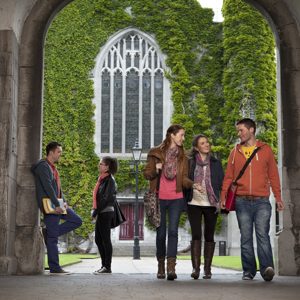
Courses
Choosing a course is one of the most important decisions you'll ever make! View our courses and see what our students and lecturers have to say about the courses you are interested in at the links below.
-
University Life
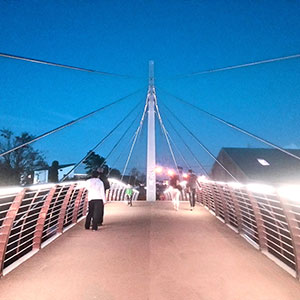
University Life
Each year more than 4,000 choose University of Galway as their University of choice. Find out what life at University of Galway is all about here.
-
About University of Galway
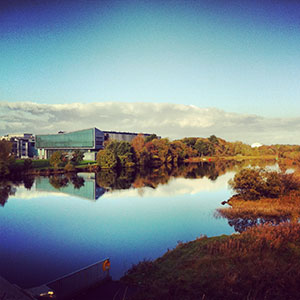
About University of Galway
Since 1845, University of Galway has been sharing the highest quality teaching and research with Ireland and the world. Find out what makes our University so special – from our distinguished history to the latest news and campus developments.
-
Colleges & Schools
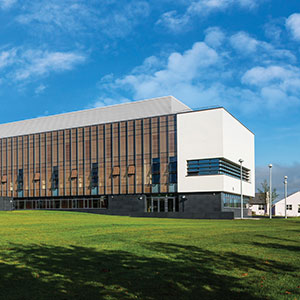
Colleges & Schools
University of Galway has earned international recognition as a research-led university with a commitment to top quality teaching across a range of key areas of expertise.
-
Research & Innovation
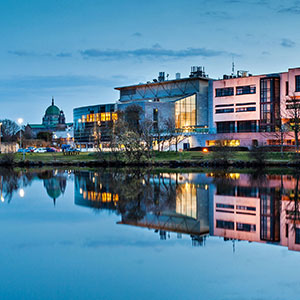
Research & Innovation
University of Galway’s vibrant research community take on some of the most pressing challenges of our times.
-
Business & Industry
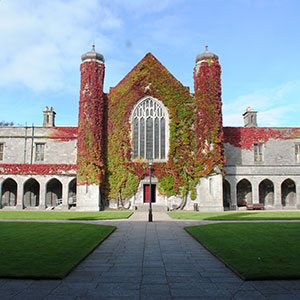
Guiding Breakthrough Research at University of Galway
We explore and facilitate commercial opportunities for the research community at University of Galway, as well as facilitating industry partnership.
-
Alumni & Friends
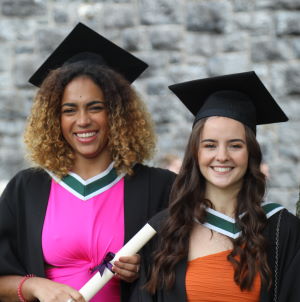
Alumni & Friends
There are 128,000 University of Galway alumni worldwide. Stay connected to your alumni community! Join our social networks and update your details online.
-
Community Engagement
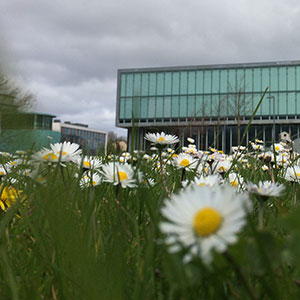
Community Engagement
At University of Galway, we believe that the best learning takes place when you apply what you learn in a real world context. That's why many of our courses include work placements or community projects.
News & Events
Irish academic appointed Chief Scientist of Food and Agriculture Organization of the UN
A University of Galway academic has been appointed Chief Scientist of the Food and Agriculture Organization (FAO) of the United Nations. Charles Spillane is Established Professor of Plant Science in the School of Biological and Chemical Sciences and Ryan Institute and leads the AgriBiosciences, Food Security and Climate Change research lab in the University. Professor Spillane joins the Core Leadership team of the Food and Agriculture Organization - the inter-governmental specialised agency within the United Nations system which leads international efforts to defeat hunger and achieve food security for all. It is the first time an Irish person has been appointed to such a high leadership position in the FAO since its foundation in 1945. The mission of the FAO is focused on three goals: the eradication of hunger, food insecurity and malnutrition; the elimination of poverty and the driving forward of economic and social progress for all; and the sustainable management and utilisation of natural resources, including land, water, air, climate and genetic resources for the benefit of present and future generations. Minister for Agriculture, Food, Fisheries and the Marine, Martin Heydon T.D., said: “The appointment of Professor Charles Spillane as Chief Scientist of the Food and Agriculture Organization of the United Nations is a significant achievement for Ireland, the University of Galway and for Professor Spillane personally. He brings deep expertise in agricultural bioscience, climate-resilient food systems and sustainability, built through decades of leading interdisciplinary research at the University of Galway. His appointment will further strengthen the FAO’s capacity to advance evidence-based innovation and partnerships for resilient, inclusive and sustainable agrifood systems worldwide.” Professor David Burn, President of University of Galway, said: “We are delighted that Professor Spillane has been appointed to this position of exceptional public service with the United Nations Food and Agriculture Organization. Professor Spillane’s appointment to this globally leading role is a testament to University of Galway’s rapidly growing reputation in agricultural research and education for food security and international development, that has been achieved over the past decade.” Professor Charles Spillane, University of Galway, said: “I am deeply honoured to be appointed as Chief Scientist within the Food and Agriculture Organization of the United Nations. I am taking on this role with profound respect for the Organization’s remarkable history and enduring mandate to achieve food security for all, and to ensure that people everywhere have regular access to sufficient, nutritious food. The Food and Agriculture Organization is a key enabler of the world’s shared commitment to a simple but powerful idea, namely that that no person should go hungry, and that the pursuit of food security is inseparable from the pursuit of peace, prosperity, and dignity.” The Food and Agriculture Organization is the United Nation’s lead agency for SDG2 (Sustainable Development Goal 2) - Zero Hunger and is the custodian agency responsible for 21 of the United Nation’s Sustainable Development Goal indicators. It was founded in 1945 in response to the multiple global food crises that followed World War II. It is governed by its 195 members, namely 194 Member States and the European Union, operating on a consensus-based one country, one vote system. Ireland is one of the Member States, where the Department of Agriculture, Food and the Marine leads the state’s engagement. The FAO has an annual budget of over US$2billion, with more than 16,000 staff working across the headquarters in Rome, five regional offices and 130 country offices. Read more information about the Food and Agriculture Organization of the United Nations here: www.fao.org.Ends
News Archive
Student awarded inaugural A.Menarini scholarship for diabetes research
All-Ireland Peatlands Centre of Excellence launched
Researchers unlock secrets of spinal disc degeneration
Wednesday, 10 December 2025
University of Galway’s Institute for Clinical Trials has been awarded the 2025 Collaboration in Medtech Award at the Irish Medtech Awards. The accolade recognises the Institute’s outstanding leadership in advancing early-stage medtech innovation through high-impact clinical partnerships, including the establishment of the Hypercare initiative to supports partners in the clinical trials approval process. It is the second year in a row in which University of Galway has won the Collaboration in Medtech Award. Established in 2023, the Institute for Clinical Trials is focused on transformation of the clinical research landscape in Ireland by creating an environment where scientific advances are translated into improved care for patients. The 2025 Collaboration in Medtech Award was secured for the Institute’s Hypercare initiative, which has been developed to transform how early-stage medtech trials are delivered in Ireland. The initiative is a national pilot, designed to support industry collaborators in navigating complex approval processes for a clinical trial, from ethics and regulatory submission to system requirements of the Health Service Executive, through to initial patient enrolment. Aligned with the mission of the Institute for Clinical Trials, this project drives excellence, inclusivity, and need-driven research to improve global health outcomes. Clinical trials increase the opportunities of patients to have early access to innovative treatments that could improve, extend or even save their lives. Encouraging more research must be a priority for those bodies charged with improving the nation’s health and the Hypercare initiative seeks to support this by ensuring Ireland is a location of choice for early feasibility/phase MedTech trial conduct and delivery. The Hypercare project aims to highlight positive changes in the delivery of clinical research in Ireland, attracting further interest and investment from MedTech stakeholders nationally and internationally. Professor Fidelma Dunne, Director of the Institute for Clinical Trials at University of Galway, said: "It is a real honour for the Institute to win the 2025 Collaboration in Medtech Award. Collaboration is at the heart of everything we do at the Institute for Clinical Trials, and this recognition reflects the commitment of our team and our partners. “The Hypercare initiative stands out as the model for academic–industry collaboration, advancing innovation while upholding the highest clinical and regulatory standards. By working closely with innovators, from early-stage start-ups to global leaders, we are making great strides in demonstrating where Ireland can lead in the world of clinical trials as well as accelerating the delivery of new technologies that can truly improve patient outcomes at home and across the globe." Hypercare has successfully supported four companies to date through the pilot, two of which have launched a first-in-human use of their device in Ireland – Medtronic and Intervene. By bringing together clinical expertise, regulatory guidance, and real-world testing, the Institute helps partners move through approvals in a more structured and predictable process and therefore more quickly through early clinical validation with the hope of bringing new helathcare solutions to patients in Ireland and beyond. The Collaboration in Medtech Award celebrates the Institute’s success in forging partnerships that strengthen Ireland’s position in medtech and support a more collaborative, efficient, and innovative approach to clinical research. Irish Medtech, the Ibec group that represents the medtech sector, Enterprise Ireland and IDA Ireland held the awards as part of Medtech Rising, an annual conference for the sector held this year at The Galmont Hotel in Galway. Ends
Tuesday, 9 December 2025
University of Galway has announced the recipients of its Writer in Residence and Digital Artist in Residence awards for 2026. Creative Writer in Residence, Nicole Flattery and Digital Artist in Residence, Jane Cassidy will take up their positions at University of Galway in early 2026. Westmeath author and short story writer, Nicole Flattery is best known for her award-winning short story collection, Show Them A Good Time and her debut novel Nothing Special, as well as being a literary critic and podcaster. Jane Cassidy is a multidisciplinary artist and educator from Galway. Trained in music and digital media, Jane's main interests lie in audio-visual immersive environments, visual music and synaesthesia. Both artists’ work reflects the diversity and richness of Ireland’s creative landscape through literature and digital arts. The awards, which are jointly funded by the Arts Council and the University, provide artists with dedicated workspaces and vital finances to develop their work, acquire resources and further Ireland’s vibrant creative scene. Dr John Kenny, Director of the BA in English and Creative Writing, School of English, Media and Creative Arts, University of Galway, said: “Our ongoing partnership with the Arts Council for this Residency has been of tremendous benefit to our Creative Writing programmes in the School. It brings additional cutting-edge literary talent into our classrooms, and it inspires our students and wider learning communities on campus and in the Galway region, by highlighting the new presence of a writer who will be engaging in their own artistic practice while spending the year developing creative ideas and conversations with us. “Nicole Flattery has featured previously as a practitioner-teacher in the Department of English, and we are thrilled to be welcoming her back for the coming year. Nicole is one of the major internationally recognised artists of literary prose among the younger generations of Irish writers, and she is also a highly esteemed literary critic and podcaster. We look forward to working with her as she finishes her next book and fosters her own inventive approach to this Residency.” This year marks a particularly exciting opportunity for Digital Artists, who have, for the first time, been included in the programme through pilot residencies. Dr Conn Holohan, Director of the Centre for Creative Technologies, University of Galway, said: “We are delighted to welcome Jane Cassidy to the Centre for Creative Technologies as the University of Galway Digital Artist in Residence. Jane’s commitment to co-creation and inclusive digital arts practice resonates strongly with the ethos and activities of the Centre. We are particularly excited about the opportunities this residency creates for students, academic researchers, and the wider creative community to engage directly with Jane’s work through workshops, co-creative projects, and public events, expanding access to the digital arts across the campus and beyond.” The Artists in Residencies programme is a cornerstone of the Arts Council’s commitment to fostering artistic excellence and enriching educational environments. Maura McGrath, Chair of the Arts Council, said: “As Chair of the Arts Council, I am delighted to congratulate the new Artists in Residence across our universities. These programmes support artists to deepen their practice while bringing fresh creative energy into teaching, research and campus life. By connecting students and staff with professional artists, they spark new ideas and show how creativity can enrich every discipline. We are very grateful to our university partners for their ongoing commitment to these residencies.” Ends
Monday, 8 December 2025
Fuair Cuibhreannas CrannMed Ltd., Salaso Health Solutions Ltd., Ollscoil na Gaillimhe agus Coláiste Ríoga na Máinleá in Éirinn maoiniú €6.5m tríd an gCiste Nuálaíochta Teicneolaíochtaí Suaiteacha Tá cuibhreannas de chomhlachtaí teicneolaíochta leighis, cúraim sláinte digití agus taighdeoirí ollscoile ag seoladh sraith trialacha cliniciúla den chéad uair ar domhan, dírithe ar fhaoiseamh fadtéarmach a thabhairt do dhaoine atá ag fulaingt le pian ainsealach mhatánchnámharlaigh. Bronnadh infheistíocht rialtais €6.5 milliún ar an gcomhpháirtíocht idir CrannMed, Salaso Health Solutions, an Institiúid do Thrialacha Cliniciúla in Ollscoil na Gaillimhe agus Coláiste Ríoga na Máinleá in Éirinn. Tá an maoiniú, arna fhógairt ag an Aire Fiontar, Trádála agus Fostaíochta, Peter Burke T.D., mar chuid den tráinse is déanaí de dhámhachtainí ó Chiste Nuálaíochta Teicneolaíochtaí Suaiteacha. Tá an tsraith trialacha cliniciúla á comhordú ag an Institiúid do Thrialacha Cliniciúla in Ollscoil na Gaillimhe agus ag Coláiste Ríoga na Máinleá in Éirinn. Comhcheanglaíonn clár na dtrialacha dhá theicneolaíocht chomhlántacha chun torthaí a fheabhsú do dhaoine atá ag fulaingt le pian ainsealach mhatánchnámharlaigh. Beidh deis ag othair teacht ar chóireáil cheannródaíoch do phian atá forbartha ag CrannMed agus ar chlár téarnaimh atá forbartha ag Salaso le tacaíocht ó speisialtóirí cliniciúla. Sa chéad triail, gheobhaidh othar instealladh a choisceann sreabhadh fola chuig suíomh na péine, rud a laghdóidh athlasadh agus néarchinn fhánacha, atá mar phríomhchúis leis an bpian. Tar éis na cóireála tosaigh, déanfaidh an dara triail measúnú ar théarnamh an othair agus tacaíocht á fáil acu ó sheirbhís dhigiteach féinbhainistíochta bunaithe ar an Intleacht Shaorga. Bíonn ar othair, a bhfuil pian ainsealach orthu, tabhairt faoi phróiseas téarnaimh struchtúrtha le neart a fhorbairt agus le hathléimneacht fíochán matánchnámharlaigh a fheabhsú. Ina theannta sin, cuirfidh na trialacha ar chumas eolaithe agus taighdeoirí sna hionaid chliniciúla teicnící nua íomháithe, dearaí trialacha cliste agus modheolaíochtaí tomhais péine a fhorbairt a bheidh de dhíth chun an réiteach seo a dhéanamh caighdeánach laistigh de chórais cúraim sláinte. Dúirt Liam Farrissey, Príomhfheidhmeannach CrannMed: “Is mór an sásamh dúinn a bheith in ann cuibhreannas ar chaighdeán chomh hard a chur le chéile anseo in Éirinn. Cuimsítear leis an gcuibhreannas réimse leathan scileanna – taighde agus forbairt na gcoincheap, déantúsaíocht, bailíochtú cliniciúil agus tacaíocht na hintleachta saorga d’fhéinbhainistíocht othar; agus tá an saineolas ar fad ag teacht ó fhoirne den scoth atá ag feidhmiú sa tír. Buntáiste iontach amháin a bhaineann leis seo is ea go mbeimid in ann ár gcóireáil a chur ar fáil d’othair Éireannacha i bhfad níos luaithe ná mar ab fhéidir murach sin. Má éiríonn linn, d’fhéadfadh sé bealach nua a leagan amach chun cóireáil a chur ar othair a bhfuil pian ainsealach orthu.” Dúirt Aoife Ní Mhuirí, Salaso: “Tríd an intleacht shaorga a úsáid chun rannpháirtíocht a mhéadú le cláir féinbhainistíochta atá leagtha amach go cliniciúil, beidh torthaí níos fearr ag othair agus laghdófar an méid ama a bheidh ar dhochtúirí nó ar theiripeoirí maoirseacht a dhéanamh ar chúram iarghnáthaimh. Is féidir an cóireáil agus an téarnamh a dhéanamh níos gaire do bhaile, rud a shábhálann am agus airgead ar othair agus ar an gcóras sláinte. Tá an cur chuige níos inbhuanaithe, níos inrochtana d’othair, agus tá an cumas aige caighdeán domhanda nua a leagan amach maidir le bainistíocht péine.” Dúirt an tOllamh Fidelma Dunne, Stiúrthóir na hInstitiúide do Thrialacha Cliniciúla in Ollscoil na Gaillimhe: “Tá sé i gceist ag an tionscadal seo réabhlóid a dhéanamh ar an gcaoi a gcuirtear cóireáil ar phian ainsealach sna hailt agus sna matáin. Cuirfidh an chóireáil nuálach agus an triail chliniciúil ar chumas othar faoiseamh éifeachtach, fadtéarmach a fháil ó phian ainsealach agus ní bheidh gá le máinliacht ná le drugaí andúile. Is sampla den chomhoibriú is fearr idir an earnáil acadúil agus tionsclaíochta é an tionscadal seo agus tá ríméad ar an Institiúid do Thrialacha Cliniciúla tacú leis na comhpháirtíochtaí seo trí shaineolas trialach cliniciúil a chur ar fáil.” Dúirt an tOllamh Fergal O’Brien, Leas-Seansailéir Taighde agus Nuálaíochta in RCSI: “Tá bród ar RCSI tacú le teicneolaíocht leighis nuálach Éireannach leis na chéad trialacha cliniciúla ar dhaoine anseo in Éirinn. Léiríonn an chomhpháirtíocht seo go bhfáiltítear anseo in Éirinn roimh chomhoibriú i réimse an taighde chliniciúil, agus tá RCSI tiomanta do bheith ag obair le comhlachtaí Éireannacha chun réitigh shláinte nua a sholáthar d’othair.” Dúirt an cuibhreannas go bhfuiltear ag súil go mbeidh na buntáistí a eascraíonn as an gcóireáil agus as na teicneolaíochtaí atá á dtriail deich n-uaire ar a laghad níos fearr ná instealltaí stéaróideacha, atá mar chaighdeán reatha cúraim i gcásanna péine ainsealaí matánchnámharlaigh. Rinneadh an infheistíocht €6.5m faoi Ghairm 7 den Chiste Nuálaíochtaí Teicneolaíochtaí Suaiteacha (DTIF). Críoch















